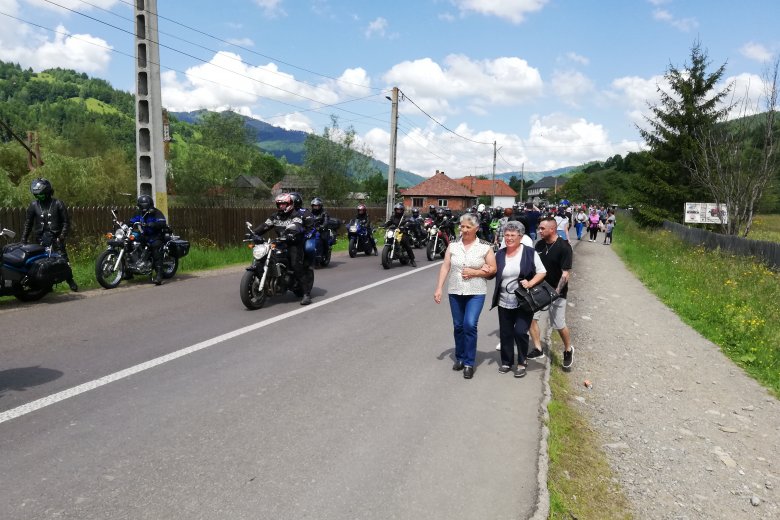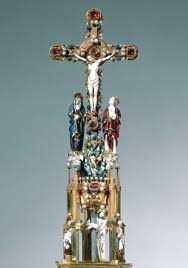Thousands of pilgrims participated on Pentecost Sunday at the oldest church in the Gyimes/Ghimeș valley, at the festive Mass celebrated at the open-air altar of Kontumác. In his sermon, local pastor József Salamon emphasized the importance of the temple for the spirit.
In the last twelve years, the region of Gyimes has become the second place of pilgrimage. Since 2007, each year thousands of tourists have visited the thousand-year-old Hungarian border on the day after the Pentecostal pilgrimage of Saturday in Csíksomlyó/Șumuleu Ciuc. This year also, thousands populated the valley of Tatros/Trotuș. The rakes of the Szekler Fast Train and the Csíksomlyó Express arrived at the Gyimesbükk/Ghimeș-Faget railway station, the former border station, on Sunday morning with 1100 pilgrims. In the yards one could count nearly a thousand cars with number plates from outside Bákó/Bacau county. The sight of the arrival of a group of motorcyclists counting a couple of hundred was uplifting. Many also came on foot, by wagon, or on horseback to the Mass. Among the pilgrims from Hungary and all parts of Transylvania there was a great number of Csangos from Moldavia and Romanian Greek and Roman Catholics. Also, many pilgrims came from Croatia and the Czech Republic.

In the part of the Valley of Gyimes appended to Bákó county men in uniforms were watching over the whole time, and at almost every hundred meters there was a gendarme or policeman paced, but the pilgrims set an example, and there were no disturbances, incidents, or car accidents. The Mass was led by a performance called “Let’s Remember Our Great Ancestors” by a Marovásárhely/Târgu-Mureș–based vocal ensemble, the Mustard Seed Community. In the performance they also played one of the preserved sermons of the great spiritual leader of Transylvania, bishop Áron Márton, after which the kids of the local school commemorated Dani Gergely, the parish priest born one hundred years ago.
The pilgrims from Hungary brought to Gyimes the calvary of King Mathias, which could be admired near the altar. The Corvin-calvary, a stemware cross made of gold, is the most valuable item in the treasury of the main cathedral of Esztergom, one of the greatest jewelry treasures of Hungary.

An the feast of the emanation of the spirit, local pastor József Salamon from Gyimesbükk emphasized the importance of the building of the temple for the spirit. In his sermon he spoke about the mission of the Csangos living at the Eastern end of the country of Saint Stephen, and of the priests and bishops leading them in the twentieth century.” Seventy years ago, bishop Áron Márton started off from here, Gyimesbükk to Csíksomlyó, after having confirmed 265 young people. He was going to be arrested, but it was not possible because the pastor was protecting his people and the people protected their pastor. This has a message for us, because it is very important for our hearts to beat together and draw from the same spring, because our nation and our country will be complete and rich in its values only if we build from the heritage left behind by our ancestors. We should feed upon God’s word and love, building on truth, because we can only survive in such a manner.”
We commemorate our great ancestors, and we should not forget those who built the temple of the spirit. Pastor Dani Gergely was first building the temple of the spirit and after the soul of the community was strengthened, after the temple of the soul was built, the building of the pilgrimage church of Gyimesbükk could began in those impossible times. Also, today it is very important for our souls to be pure, and that love and truth guide our way,” pastor József Salamon emphasized.
After the Mass, the locomotive decorated with the portrait of King Saint Stephen rolled to guardhouse number 30, which was once located near the border of the eastern extreme of Hungary. Here, a festive program of students from the Dani Gergely General School took place, after which the Szekler Fast Train and the Csíksomlyó Express pilgrim trains started off from Gyimes to Madéfalva/Siculeni.
Photos: László Dobos